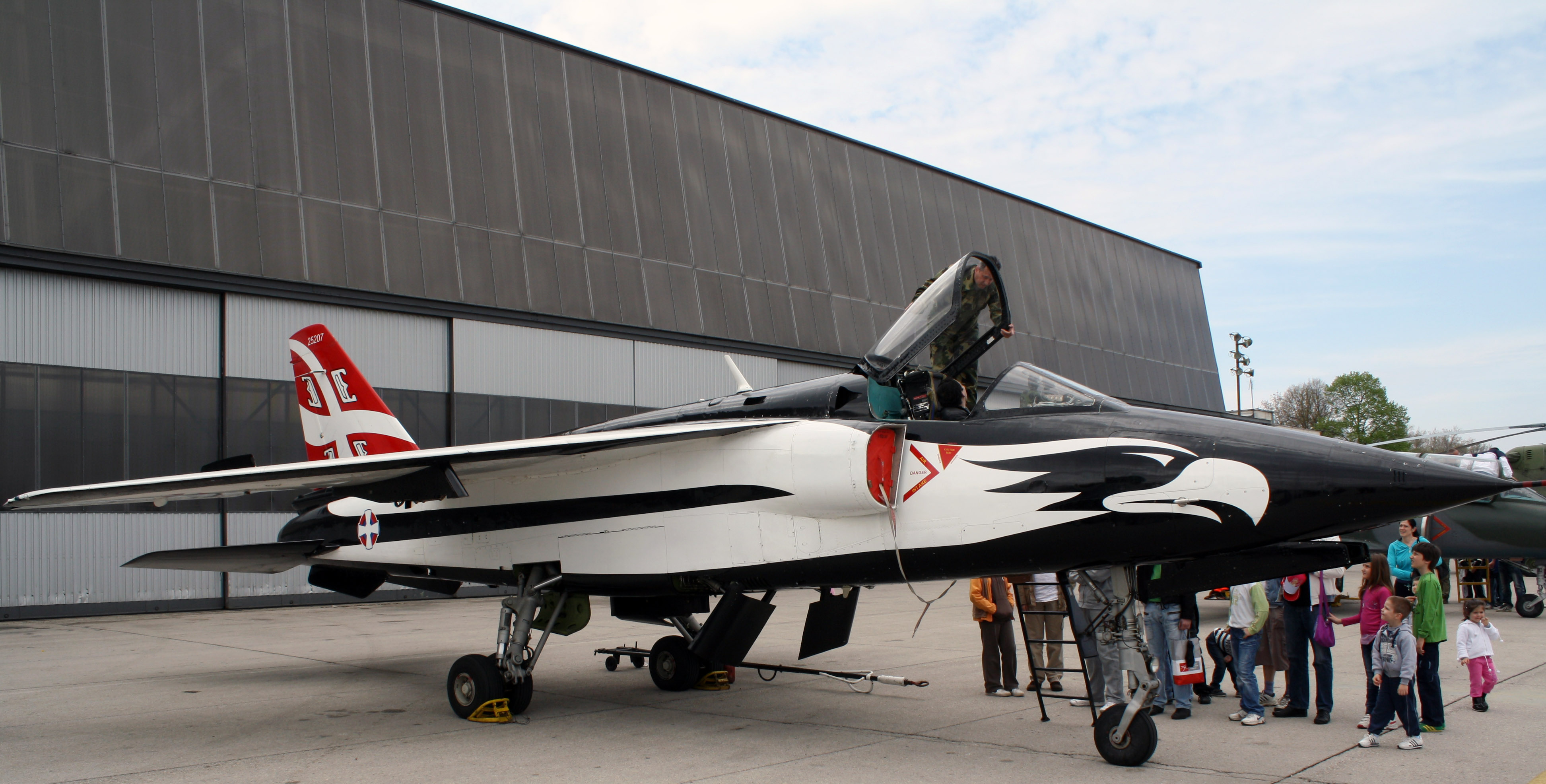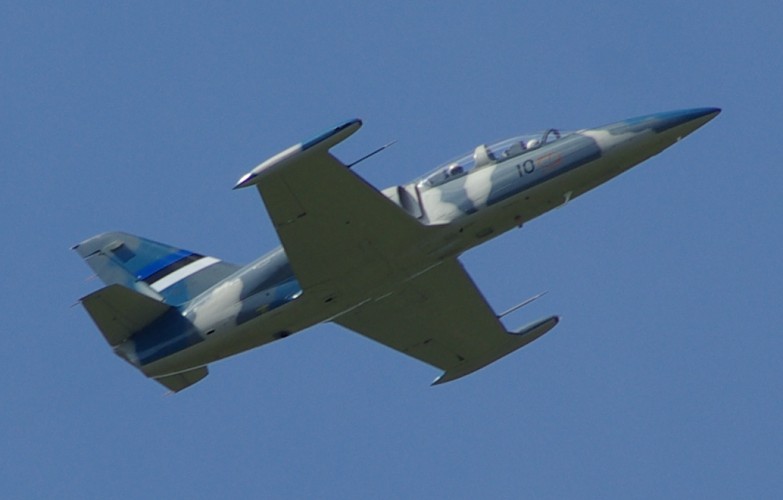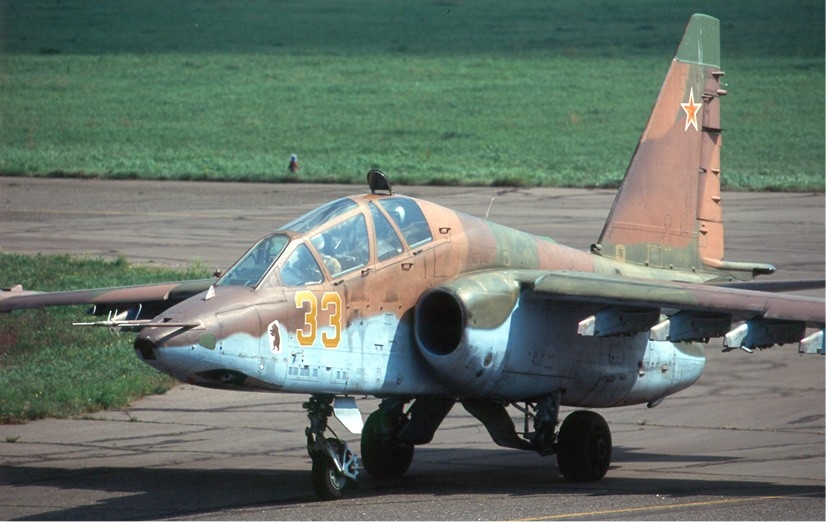|
AA-8 Aphid
The Molniya (now Vympel) R-60 (NATO reporting name: AA-8 "Aphid") is a short-range lightweight infrared homing air-to-air missile designed for use by Soviet fighter aircraft. It has been widely exported, and remains in service with the CIS and many other nations. History The R-60 was initially developed for the MiG-23. Work began on the weapon, under the bureau designation K-60 (''izdeliye'' 62), in the late 1960s. Series production began in 1973. It entered service with the designation R-60 (NATO reporting name "Aphid-A"). When introduced, the R-60 was one of the world's lightest air-to-air missiles, with a launch weight of . It has infrared guidance, with an uncooled ''Komar'' (Mosquito) seeker head. Control is by forward rudders with large rear fins. The distinctive canards on the nose, known as "destabilizers," serve to improve the rudders' efficiency at high angles of attack. The R-60 uses a small, tungsten expanding-rod surrounding a high explosive fragmentation warhe ... [...More Info...] [...Related Items...] OR: [Wikipedia] [Google] [Baidu] |
Infrared Homing
Infrared homing is a passive weapon guidance system which uses the infrared (IR) light emission from a target to track and follow it seamlessly. Missiles which use infrared seeking are often referred to as "heat-seekers" since infrared is radiated strongly by hot bodies. Many objects such as people, vehicle engines and aircraft generate and emit heat and so are especially visible in the infrared wavelengths of light compared to objects in the background. Infrared seekers are passive devices, which, unlike radar, provide no indication that they are tracking a target. That makes them suitable for sneak attacks during visual encounters or over longer ranges when they are used with a forward looking infrared or similar cuing system. Heat-seekers are extremely effective: 90% of all United States air combat losses over the past 25 years have been caused by infrared-homing missiles. They are, however, subject to a number of simple countermeasures, most notably by dropping flares b ... [...More Info...] [...Related Items...] OR: [Wikipedia] [Google] [Baidu] |
Su-17
The Sukhoi Su-17 (''izdeliye'' S-32) is a variable-sweep wing fighter-bomber developed for the Soviet military. Its NATO reporting name is "Fitter". Developed from the Sukhoi Su-7, the Su-17 was the first variable-sweep wing aircraft to enter Soviet service. Two subsequent Sukhoi aircraft, the Su-20 and Su-22, have usually been regarded as variants of the Su-17. The Su-17/20/22 series has had a long career and has been operated by many other air forces of including the Russian Federation, other former Soviet republics, the former Warsaw Pact, countries in the Arab world, Angola and Peru. Development Shortly after the Su-7 fighter-bomber was put into service, the Sukhoi Design Bureau was ordered to develop a deep modernization program for the aircraft in the early 1960s. The program would be aimed primarily at updating on-board avionics and the takeoff/landing performance characteristics. The concept of variable-geometry wings - something gaining wider attention at that time - ... [...More Info...] [...Related Items...] OR: [Wikipedia] [Google] [Baidu] |
Soviet Union
The Soviet Union,. officially the Union of Soviet Socialist Republics. (USSR),. was a List of former transcontinental countries#Since 1700, transcontinental country that spanned much of Eurasia from 1922 to 1991. A flagship communist state, it was nominally a Federation, federal union of Republics of the Soviet Union, fifteen national republics; in practice, both Government of the Soviet Union, its government and Economy of the Soviet Union, its economy were highly Soviet-type economic planning, centralized until its final years. It was a one-party state governed by the Communist Party of the Soviet Union, with the city of Moscow serving as its capital as well as that of its largest and most populous republic: the Russian Soviet Federative Socialist Republic, Russian SFSR. Other major cities included Saint Petersburg, Leningrad (Russian SFSR), Kyiv, Kiev (Ukrainian Soviet Socialist Republic, Ukrainian SSR), Minsk (Byelorussian Soviet Socialist Republic, Byelorussian SSR), Tas ... [...More Info...] [...Related Items...] OR: [Wikipedia] [Google] [Baidu] |
NATO Reporting Name
NATO reporting names are code names for military equipment from Russia, China, and historically, the Eastern Bloc (Soviet Union and other nations of the Warsaw Pact). They provide unambiguous and easily understood English words in a uniform manner in place of the original designations, which either may have been unknown to the Western world at the time or easily confused codes. For example, the Russian bomber jet Tupolev Tu-160 is simply called "Blackjack". NATO maintains lists of the names. The assignment of the names for the Russian and Chinese aircraft was once managed by the five-nation Air Standardization Coordinating Committee (ASCC), but that is no longer the case. American variations The United States Department of Defense (DOD) expands on the NATO reporting names in some cases. NATO refers to surface-to-air missile systems mounted on ships or submarines with the same names as the corresponding land-based systems, but the US DoD assigns a different series of numbers wi ... [...More Info...] [...Related Items...] OR: [Wikipedia] [Google] [Baidu] |
J-22 Orao
The Soko J-22 Orao ( sr-cyr, text=Oрао, translation=eagle) is a Yugoslav twin-engined, subsonic ground-attack and aerial reconnaissance aircraft. It was developed and built in collaboration by SOKO in Yugoslavia and by Avioane Craiova in neighbouring Romania, being known in the latter as the IAR-93 Vultur. The Orao was designed as either a single-seat main attack version or as a combat-capable twin-seat version, the latter being principally intended for advanced flight- and weapons-training duties. It was developed as a joint Yugoslav-Romanian project, known as YuRom, during the 1970s. Early ambitions to produce a supersonic fighter were scuppered by Britain's unwillingness to permit the desired engine to be license-produced in Eastern Europe. Further difficulties in fitting an afterburner to the older Rolls-Royce Viper also hindered development and the performance of early-build aircraft. First flying during November 1974, the resulting aircraft would equip the air forc ... [...More Info...] [...Related Items...] OR: [Wikipedia] [Google] [Baidu] |
Aero L-39 Albatros
The Aero L-39 Albatros is a high-performance jet trainer designed and produced in Czechoslovakia by Aero Vodochody. It is the most widely used jet trainer in the world; in addition to performing basic and advanced pilot training, it has also flown combat missions in a light-attack role. Unusually, the aircraft never received a NATO reporting name. The L-39 Albatros was designed during the 1960s as a successor to the Aero L-29 Delfín, an early jet-powered principal training aircraft. Performing its maiden flight on 4 November 1968, it became the first trainer aircraft in the world to be equipped with a turbofan powerplant. Quantity production of the L-39 Albatros proceeded in 1971; one year later, it was formally recognized by the majority of the Warsaw Pact countries as their preferred primary trainer. Accordingly, thousands of L39s would be produced for various military customers in Eastern Europe. Additionally, it was exported to a range of countries across the world both as a ... [...More Info...] [...Related Items...] OR: [Wikipedia] [Google] [Baidu] |
BAE Systems Hawk
The BAE Systems Hawk is a British single-engine, jet-powered advanced trainer aircraft. It was first flown at Dunsfold, Surrey, in 1974 as the Hawker Siddeley Hawk, and subsequently produced by its successor companies, British Aerospace and BAE Systems. It has been used in a training capacity and as a low-cost combat aircraft. Operators of the Hawk include the Royal Air Force (notably the Red Arrows display team) and several foreign military operators. The Hawk is still in production in the UK and under licence in India by Hindustan Aeronautics Limited (HAL), with over 900 Hawks sold to 18 operators around the world. Development Origins In 1964, the Royal Air Force specified a requirement (Air Staff Target, AST, 362) for a new fast jet trainer to replace the Folland Gnat. The SEPECAT Jaguar was originally intended for this role, but it was soon realised that it would be too complex an aircraft for fast jet training and only a small number of two-seat versions were purc ... [...More Info...] [...Related Items...] OR: [Wikipedia] [Google] [Baidu] |
Mi-24
The Mil Mi-24 (russian: Миль Ми-24; NATO reporting name: Hind) is a large helicopter gunship, attack helicopter and low-capacity transport helicopter, troop transport with room for eight passengers. It is produced by Mil Moscow Helicopter Plant and has been operated since 1972 by the Soviet Air Force and its successors, along with 48 other nations. In NATO circles, the export versions, Mi-25 and Mi-35, are denoted with a letter suffix as "Hind D" and "Hind E". Soviet pilots called the Mi-24 the "flying tank" (russian: летающий танк, letayushchiy tank, links=no), a term used historically with the famous World War II Soviet Ilyushin Il-2#"The Flying tank", Il-2 ''Shturmovik'' armored ground attack aircraft. More common unofficial nicknames were "Galina" (or "Galya"), "Crocodile" (russian: Крокодил, Krokodil, links=no), due to the helicopter's camouflage scheme, and faceted glass, "Drinking Glass" (russian: Стакан, Stakan, links=no), because of the f ... [...More Info...] [...Related Items...] OR: [Wikipedia] [Google] [Baidu] |
Yak-141
The Yakovlev Yak-141 (russian: Яковлев Як-141; NATO reporting name "Freestyle"), also known as the Yak-41, is a Soviet supersonic vertical takeoff/landing (VTOL) fighter aircraft designed by Yakovlev. It was used for testing. Design and development Yakovlev always believed the Yak-38 to be an interim aircraft, developed to gain experience designing and developing military VTOL aircraft. Even before the Yak-38's introduction, the Soviet Navy desired a more comprehensive aircraft, with greater capabilities than the Yak-38 offered. The result was a design contract offered to Yakovlev in 1975. The requirement was for an aircraft with only one mission: air defense of the fleet. Unlike the Yak-38, this aircraft was to have sustained supersonic speed. Maneuverability, radar and weapons loads were expected to be similar to those of current front-line fighters. For the Soviet Navy this aircraft was to be their next generation VTOL fighter. For Yakovlev the aircraft was vi ... [...More Info...] [...Related Items...] OR: [Wikipedia] [Google] [Baidu] |
Yak-38
The Yakovlev Yak-38 (russian: Яковлев Як-38; NATO reporting name: "Forger") was the Soviet Naval Aviation's only operational VTOL strike fighter aircraft in addition to being its first operational carrier-based fixed-wing aircraft. It was developed specifically for, and served almost exclusively on, the s ( heavy aviation cruiser in Russian classification). Design and development Designed by the A.S. Yakovlev Design Bureau JSC, the first drawings showed a supersonic aircraft strongly resembling the Hawker P.1154 in study in the United Kingdom, but with two R27-300 engines. Supersonic performance would have implied many difficulties of development, and it was decided to initially develop a relatively simple aircraft limited to Mach 0.95. Although the Yak-38 and Yak-38M were developed from the land-based Yakovlev Yak-36, the aircraft had almost nothing in common. The prototype VM-01 was finished on 14 April 1970. Though outwardly similar to the British Hawker Sidd ... [...More Info...] [...Related Items...] OR: [Wikipedia] [Google] [Baidu] |
Yak-28
The Yakovlev Yak-28 (russian: Яковлев Як-28) is a swept wing, turbojet-powered combat aircraft used by the Soviet Union. Produced initially as a tactical bomber, it was also manufactured in reconnaissance, electronic warfare, interceptor, and trainer versions, known by the NATO reporting names Brewer, Brewer-E, Firebar, and Maestro respectively. Based on the Yak-129 prototype first flown on 5 March 1958, it began to enter service in 1960. Design and development The Yak-28 was firstTaylor 1976, pp. 520–521. seen by the West at the Tushino air show in 1961. Western analysts initially believed it to be a fighter rather than an attack aircraft—and a continuation of the Yak-25M—and it was designated "Flashlight". After its actual role was realized, the Yak-28 bomber series was redesignated "Brewer". The Yak-28 had a large mid-mounted wing, swept at 45 degrees. The tailplane set halfway up the vertical fin (with cutouts to allow rudder movement). Slats were fitt ... [...More Info...] [...Related Items...] OR: [Wikipedia] [Google] [Baidu] |
Su-25
The Sukhoi Su-25 ''Grach'' (russian: Грач ('' rook''); NATO reporting name: Frogfoot) is a subsonic, single-seat, twin-engine jet aircraft developed in the Soviet Union by Sukhoi. It was designed to provide close air support for Soviet Ground Forces. The first prototype made its maiden flight on 22 February 1975. After testing, the aircraft went into series production in 1978 in Tbilisi in the Georgian Soviet Socialist Republic. Early variants included the Su-25UB two-seat trainer, the Su-25BM for target-towing, and the Su-25K for export customers. Some aircraft were upgraded to the Su-25SM standard in 2012. The Su-25T and the Su-25TM (also known as the Su-39) were further developments, not produced in significant numbers. The Su-25, and the Su-34, were the only armoured, fixed-wing aircraft in production in 2007.Gordon and Dawes 2004. Su-25s are in service with Russia, other CIS members, and export customers. Production of the Su-25 ended in 2017 in Russia and 201 ... [...More Info...] [...Related Items...] OR: [Wikipedia] [Google] [Baidu] |








.jpg)
